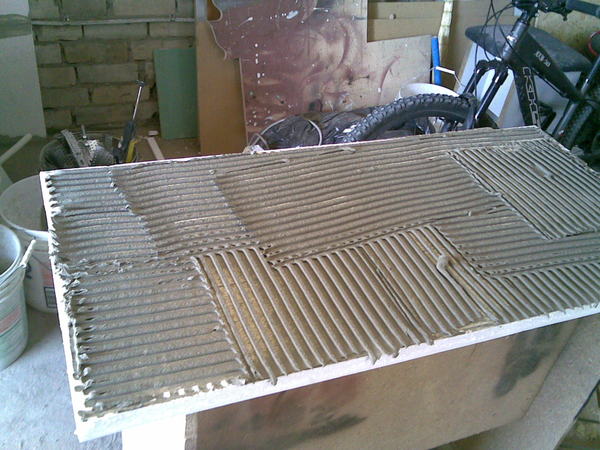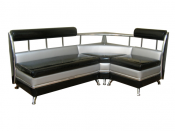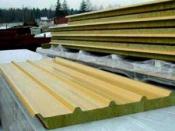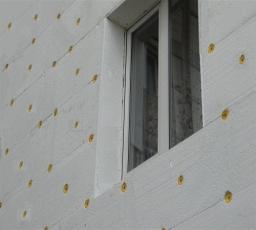Search
Login
Recommended
Bonding concrete and polystyrene with each other. How to stick foam to concrete? Ways to use glue, dowels, mounting foam or liquid nails, pros and cons
Attractive cost, combined with excellent heat, sound insulation and other properties, contributes to the widespread use of polystyrene as a heat-insulating material both indoors and outdoors. In addition, the foam can be easily fixed or glued to almost any surface. The main thing is to correctly determine the method of attaching the foam to the insulated surface and correctly select the material that meets the properties of the insulation.
Content
- Ways to install foam
- Advantages and disadvantages of various methods of attaching polystyrene to concrete
- Useful Tips
Ways to install foam
Due to the wide range of diverse construction chemistry that promotes bonding or bonding of both homogeneous and dissimilar materials, at the moment there are several ways of fixing concrete and foam:
- by means of glue in the form of a dry mixture;
- using polyurethane foam;
- using liquid nails;
- using dowels.
In order to answer the question of how to glue polystyrene foam to concrete, it must be borne in mind that the choice of adhesive composition for polystyrene largely depends on:
- the presence of irregularities of the surface insulated with foam;
- installation inside or outside the building;
- financial opportunities.
However, when choosing chemistry, it should be borne in mind that the composition in contact with the foam should not contain organic solvents, since the heat-insulating material is not particularly resistant to this category of elements.
Advantages and disadvantages of various methods of attaching polystyrene to concrete
The use of dry adhesives
The dry adhesive mixture is made on a cement basis with the addition of various binders, to be diluted with water before direct use. Widespread in this category were mixtures such as Ceresit CT 85, STOPTER K-20, TERMOKREPS PPS.
Advantages of using dry adhesives:
- Durability;
- High level of adhesion to the concrete surface;
- After complete hardening, they are distinguished by good moisture resistance, frost resistance;
- The ability to adjust the position of the foam within 10-20 minutes;
- Low cost.
Disadvantages:
- Inability to carry out installation at low temperatures;
- The need to use diluted glue for 2 hours;
- The possibility of a violation of proportion when mixing the adhesive;
- Full hardening of the glue occurs after 3 days.
Adhesive in the form of a dry mixture is preferable to use when pasting with a foam base, having various kinds of irregularities, which are hidden by means of a certain technology of applying glue to the insulation.
To find out how to properly stick the foam, you need to consider the methods of applying the adhesive mixture to the insulation:
- The continuous method is used when the irregularities do not exceed 3mm. In this case, the adhesive is applied with a notched trowel over the entire area of \u200b\u200bthe foam, after which it is immediately applied to the insulated surface. Here it is necessary to apply a certain force so that the glue fills the space formed between the bumps.

- The cavity method is used for irregularities not exceeding 5 mm. In this case, stepping back from the edge of the insulation 1.5-2 cm, the adhesive is applied in separate strips, first around the perimeter, and then in the center of the foam plate. Such breaks will not allow air jams to form when the foam comes in contact with the insulated surface.
- The beacon method is used for irregularities reaching 15 mm. The glue is applied along the perimeter of the insulation in strips, indented from the edges of 1.5-2 cm, with a diameter of 50-60 mm and a height of about 20 mm. At the same time, similar beacons are also made in the center of the plate.

Foam Application
Construction adhesive foam is represented by a one-component polyurethane aerosol, available in standard cylinders similar to conventional mounting foam. Before starting work, the cylinder is fixed in a special gun, through which the output of the required amount of foam is adjusted. Before use, the container needs only to be shaken to mix particles exfoliated during storage. Aerosol adhesive types include TYTAN STYRO 753, Ceresit CT 84, PENOSIL, IZOLEMPH 3104/11.

Advantages of polyurethane foam:
- Reducing the time interval between operations;
- Lack of smell;
- High adhesion with most building materials;
- Moisture resistance;
- Frost resistance;
- Compactness;
- Possibility of work at subzero temperatures;
- Suitable for internal, external work;
- Light weight;
- No deformation of glued surfaces;
- High resistance to mold, fungus;
- Shrinkage is excluded, as well as subsequent expansion of the applied glue;
- Lack of emission of vapors toxic to health;
- Simplicity, ease of use;
- Possibility of fixing with dowels after 2 hours.
Disadvantages:
- The need for an even base for applying foam;
- Acquisition of special flushing to extend the operational life of the gun;
- Instability to influence of ultraviolet.
- High price.
Before gluing the foam with polyurethane foam, it is necessary to clarify in advance its compliance with the application to this insulation and future operating conditions. In general, polyurethane foam is applied by the strip method along the perimeter of the sheet, observing indents from the edges. In this case, in the center of the sheet, it is possible to apply the foam not in a straight line, but in a zigzag shape, especially if the surface contains slight irregularities.
Thus, foam glue for foam will be an ideal solution when working on a relatively flat surface. In addition, the use of glue-foam can significantly reduce installation time and save energy.
Using Liquid Nails
As an alternative to dry adhesive mixtures, as well as mounting foam, liquid nails are widely used for gluing concrete and foam, representing a mixture of polymers in combination with various additives, fillers. For example, Mastiffix Ultra liquid nails are intended for gluing dissimilar materials, while TITEBOND universal ones are suitable for gluing both homogeneous and dissimilar substances.
The advantages of liquid nails:
- Glue application is provided at plus temperatures;
- High strength bonding of surfaces;
- Heat resistance;
- Frost resistance;
- They are odorless;
- Glue setting time, based on the brand and manufacturer, varies from 10-30 minutes;
- Full hardening occurs in a day;
- The ability to smooth out some surface irregularities not exceeding 5 mm;
- Low glue consumption.
Disadvantages:
- The quickness of the setting of the material requires certain skills to adjust the glued material;
- High price.
The installation of foam by means of liquid nails is carried out by the point method, or by thin intermittent strips around the perimeter of the sheet.

Fastening the foam to concrete using liquid nails, in comparison with dry adhesives and glue-foam, will save time and financial resources provided that the type of glue is correctly selected relative to its place of application and operating conditions.
Using dowels
In addition to glue, foam or liquid nails, special dowels in the form of a mushroom, produced in various sizes, are used to improve the quality of fastening of the insulation layer to the base. The dowel-mushroom is made of plastic, although the nail itself can be either plastic or metal, designed for fastening heavy heat-insulating materials. The length of the dowel is directly dependent on the density of the material, since the higher the density of the base, the shorter the dowel is used.

The advantages of using dowels:
- Prevent sliding thermal insulation;
- Provide a more snug fit of the foam to the base;
- Prevent dust, moisture;
- Asymmetric expansion area, preventing the dowel from falling out;
- Almost complete exclusion of the appearance of cold bridges;
- Wide size range;
- Simplicity and ease of installation;
- Low cost.
Disadvantages:
- The use of a metal core can serve as a conductor of cold, reducing the thermal insulation properties of the insulation.
Thus, we first glue the polystyrene + on the facade using glue, foam or liquid nails, and then proceed to fixing the insulation with dowels.
For a sufficiently reliable fixation of the foam it will be quite enough to fix the sheet with 3 dowels so that one is located in the center, and the other 2 in the lower corners of the foam, between the rows. In this case, the lower dowels of the next row of foam will hold the top of the previous row.

Useful Tips
Before installing the foam, regardless of how it is attached, you must:
- To clear the warmed base from fragile sites, dust, reducing adhesion;
- Putty deep cracks;
- Remove strongly protruding irregularities;
- Prime the entire insulated surface.
Based on the foregoing, to the question of how to stick foam + to concrete, there is no definite answer, since the insulated surface can be relatively flat or contain irregularities. In addition, the financial side plays an important role in this matter.






